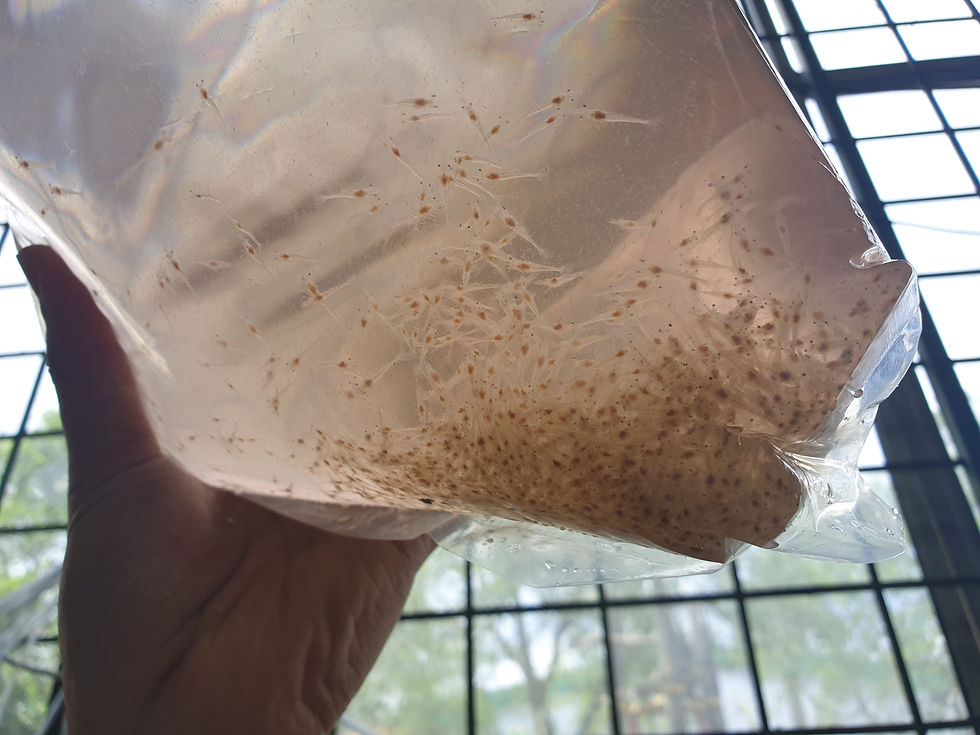White Feces Disease (WFD) in the culture of L Vannamei | Aquaculture Technology
- yxtung
- Aug 16, 2020
- 2 min read
Disease outbreak causing mass mortality in shrimp farms is common especially in a farm that has been operating for more than 2 years. Penaeus vannamei, as compared to mudcrab is more susceptible to disease. The disease might come from various pathogens such as bacteria, parasites, viruses and fungi. Unfavourable environments such as algae crash, rising total ammonia nitrogen (TAN), presence of protozoa, high organic load, high total Vibrio count in water, low transparency, high alkalinity and long exposure to low dissolved oxygen will cause stress in the culture organisms. The disease outbreak will occur when there’s subpar environmental conditions and the presence of pathogens, coupling with the lowering of the immune system of the culture organism due to stress, which then lead to mortalities. In this post we will touch on the White Feces Disease (WFD).

White feces disease (WFD) is among one of the most serious diseases in L.Vannamei. WFD causes significant economic losses to shrimp farmers, just like all the other diseases, mostly because of the high feeding conversion ratio (FCR), slow growth and variable sizes of shrimp at harvest.

The first WFD sign can be easily diagnosed when there is presence of white feces on the surface of the culture water. WFD is often related to the presence of Vibrio spp. in the culture environment, whether from water or food. Other signs and symptoms of WFD in shrimp are 1) dark discoloration of the gills, 2) hepatopancreas and gut become white and pale colour 3) infected shrimp show loose shell 4) slow growth.

To start a shrimp culture, selection of specific pathogen free (SPF) broodstock, screening of healthy and disease free shrimp brooders, filtration and sanitization of water before intake are important precautions to follow. The best that shrimp farmers can do to cope with this disease is prevention.
Nevertheless, should your cultured batch be infected by WFD, there are several steps that can be done to mitigate the overall impact.
Studies have suggested that usage of herbal ingredients such as papaya, ketapang and mangrove leaf extract have natural antioxidants and antiseptics properties. Herbal ingredients treatments suppress the growth of Vibrio spp. when applied at a certain concentration. One of the studies shows that leaf extract of mangrove Rhizophora at concentrations of 700mg/L can suppress the growth of Vibrio. spp. (Supono et al., 2019)
Improving the water conditions is a crucial aspect to look at if WFD arises. Typical strategies include the application of probiotics to improve the water quality and shrimp immune system. Daily monitoring of water quality is important to make sure we can control the environmental condition by the addition of chemicals for buffering and troubleshooting the issue as early as possible. Constant observation of the shrimp is necessary before the disease further spreads and causes mass mortality.
In short, shrimp farmers should be more alert to the changes of their culture. This is closely related to the pond or culture tank management. As the technology gets improved in this modernization, the way of solving the arising problem might change from time to time. If the shrimp farmer still depends on the previous husbandry method, they will find it hard to succeed. Thus, investing for new knowledge and experience would stand a better chance of success!




Comments